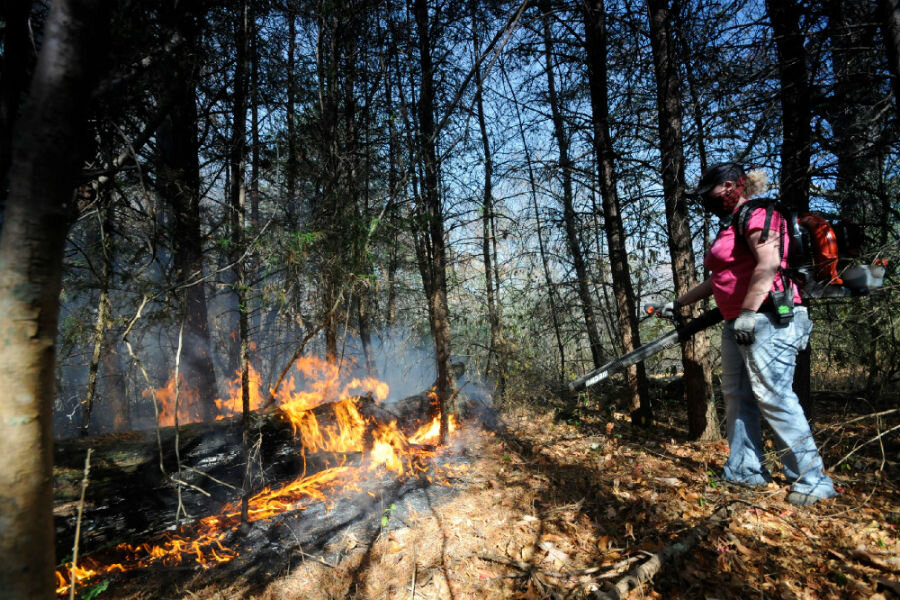Historic droughts and warmer fall are driving unusual Southeast wildfires
Loading...
It has been a trying few months for the American Southeast.
After the coastal areas were battered by hurricane Matthew and subsequent flooding in October, the worst drought in a decade and a warmer-than-usual fall fueled conditions inland that is contributing massive wildfires.
According to the National Interagency Fire Center, 15 large fires have burned through more than 95,000 acres in seven Southeastern states in recent months, with the latest occurring Monday in the Smoky Mountains National Park, resulting in an evacuation of more than 14,000 residents and visitors.
While scenes of blazing forests and hazy skies are more frequently associated with the drier Western states, wildfires have always burned in Southeastern states despite being wetter and cooler. But the incident this year is noted for its intensity, having occurred during exceptional drought and scarce rainfall for months. Although experts are wary of linking such conditions to climate change, they say that with current climate model predictions of higher temperatures and longer consecutive dry periods, risks for wildfires will increase.
"The region has been and still is experiencing exceptional drought, conditions in general entering this fall season were much drier than usual," Jim Vose, Forest Service Southern Research Station scientist tells The Christian Science Monitor in a phone interview. "Most climate models predict that these kinds of conditions are likely to occur more frequently in the future."
The three conditions – warm weather, dry leaves to act as fuel, dry conditions that stretch for a long period of time – contribute to the spread of wildfires. Ignition sources can vary, with arson suspected as a source in North Carolina.
October is typically a dry month in the Southeast, but according to the US Drought Monitor, Alabama, Tennessee, and Georgia have been suffering from exceptional drought in recent weeks, with Alabama and Mississippi not seeing measurable rain in some parts since mid-September, accompanied by unusually high temperatures. Hundreds of new fires have been reported and streams are at near-record low levels. The last time a similarly major drought has occurred was in 2007.
Since early this week, a couple of rain showers have descended in some areas, including in Georgia, North Carolina, and Tennessee, but according to data tracking rainfall in the region, the projected amount will not be enough to eliminate effects of the drought.
"We just got 1 to 3 inches across some of the heaviest drought areas," William Schmitz, Service Climatologist at the Southeast Regional Climate Center told the Monitor in a phone interview. Most areas heavily hit by the drought would require up to 10 inches of rain to be replenished.
Some studies have linked the wildfires sparked by long-term drought in Western states to global warming, but experts are hesitant to draw links between the unusual wildfires in the Southeast this year to climate change given a lack of data pinning rising temperatures and persistent drought in the region.
But they do agree that with the Western conditions and climate model projections as indicators, those factors, if present, may lead wildfires to become common.
"We do know just like in the Western United States warmer temperatures mean increased risks of wildfires," Park Williams, assistant research professor at Columbia University in New York, tells the Monitor in a phone interview. "If temperatures are going to continue warming, then we should see more years that seem more similar to the current year."








